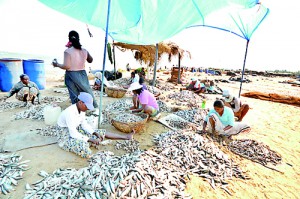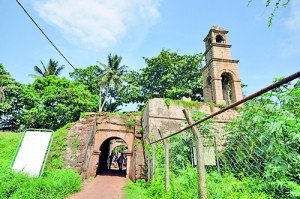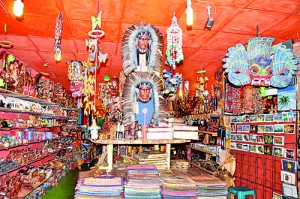Savour every nook and corner of Negombo
Fancy a day away from the city but not too far? Negombo just a 45 minute drive away from the capital along the Colombo-Negombo Road (38 kilometres from Colombo) offers a colourfully diverse experience with its breathtaking stretches of beach and lagoon, fishing villages and sites of archaeological importance dating back to the Portuguese and Dutch period.

Sails in the sunset: The catemarans come in. Pix by Hubert Fernando
How Negombo, known as Mee Gamuwa in Sinhala, derived its name is an interesting tale.
During King Kavantissa’s time, the story goes, that the giant Welusumana was entrusted with a mission to find a massive bee hive to satisfy a craving of the pregnant queen Vihara Maha Devi. After much searching Welusumana located an enormous bee hive in a boat on the Negombo beach and the place, which was thereafter referred to as ‘Mee Gomuwa’ later became known as Mee Gamuwa (Negombo).
Our first stop was the bustling fish market near the Esplanade also known as the Kotupittaniy. For seafood lovers, this is the place to

Women making dryfish: A common occupation in Negombo
zero in on the fish or seafood of their choice. The moment it opens at 6 a.m, people throng the stalls to grab a bargain. Mari Jenita, a fish seller who has been in the business for close to 21 years tells us that the marketplace has about 300 stalls operating from 6.a.m.to 6.p.m. from Monday to Saturday. Both tourists and locals patronise the market.
While sellers make a commotion trying hard to grab the attention of those doing their rounds, behind the fish market, by the beach we spotted a different kind of an activity – women in small groups sheltered from the scorching sun in small huts. Curiosity takes us in that direction and we come upon rows and rows of mats laid all over the beach spread with fish. Here is where the womenfolk cut and chop up the fish in the process of drying and making maldive fish. Each has to meet the target of about 100 kilos, before they can call it a day, we are told.

The old fort: History within the walls
A quick chat with them and we proceed to the Negombo lagoon on Pitipana Road. It is a picturesque scene: hundreds of colourful boats and trawlers anchor at the lagoon from the wee hours to unload the previous day’s catch. The lagoon is rich in mangroves and water birds,  and boat rides along the lagoon have become one of the ‘things to do’ for visitors to Negombo.
and boat rides along the lagoon have become one of the ‘things to do’ for visitors to Negombo.
From the present, the past is just a walk away- close by on Custom Street is the Negombo Fort, believed to have been built by the Portuguese. With the advent of the Dutch, the fort had been modified and used to store and trade cinnamon, collected from all over Negombo. It was from here that the cinnamon was sent to various parts of the world via the Hamilton Canal to the port of Colombo. The stables built inside the fort were later used by the British to house prisoners and it was through the tunnels inside the fort that they were also transferred to the Hamilton Canal to be moved out. One of the openings of the tunnel could still be seen, though covered with shrubs. Part of the site, now houses the Negombo prison.

Craft paradise: Souvenir shop on Hotel Road
The old District Courts premises in the Fort, was a bungalow during the Dutch and British periods, while the dilapidated Clock Tower built by the British in commemoration of Queen Victoria’s Jubilee celebrations is also worth a visit.
As you walk out of the fort and up the slope on your left, you find St. Stephen’s Anglican Church- dating to the Dutch period and said to be over 300 years old. A church spokesperson said it is built on an artificial mound as they wanted God to be on a supreme position. During the British period it was taken over by the Church of England and subsequently given to the Church of Ceylon. During the 1880s, missionaries who came from England stayed here. The church has been renovated whilst still retaining its architecturally impressive facade and even today, you find some of the Dutch period timber used for the roofs and original tiles in the altar area. Dutch and Portuguese tourists visit the church as it is mentioned in their historical books.
Not far away is Kuttiduwa, scene of an interesting activity that visitors to Negombo could indulge in. Catamarans, that traditional method of fishing, are fast becoming an attraction for both locals and tourists. The sight of these sail boats returning from the deep sea, especially at sunset, is a photograph that many long to capture. The more adventurous traveller can also join the fishing crews, for a truly authentic experience.
Our next stop over was at the Bodhirajaramaya Temple in Angurukaramulla which is also known as the Angurukaramulla temple. Built in 1868, the temple was originally at a small plot of land called ‘Kaju Gaha watte’ adjacent to the current temple premises, and was occupied by two monks -Akurala Maha Thero and Sinhale Maha Thera. Its name Angurukaramulla came about as it was surrounded by a small community that engaged in producing charcoal (anguru) for industrial purposes, according to the Chief Monk at the temple Ven. Kondagammulle Gnanashri Tissa Thera. In the temple’s mural chamber are statues, art and wall paintings dating to the 18th -19th Century. What is seen here is a contemporary temple painting tradition which is a blend of the Kandyan period art with the European mural traditions, he says, the early stages of the country’s temple painting traditions.
After sightseeing there’s no shortage of places to unwind. On Poruthota Road (Hotel Road), a two kilometre ride from the main Negombo Town, are a line-up of inviting hotels where you could just walk in to, try out a mouthwatering dish, while along St. Joseph’s Street are more restaurants, cafes and eateries for a more inexpensive meal.
Should you feel your journey is incomplete without a souvenir or two, check out the Aubowan Negombo Centre on Hotel Road on your way back home. Open from 8. a.m. to 10.30 p.m., it is chockfull of items-from wood carvings, leather products, metal crafts, wall hangings to masks, handlooms, batiks and statues.


